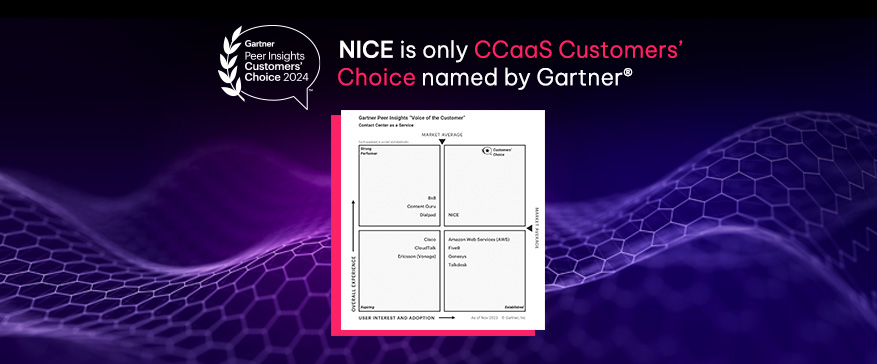What is Call Flow?
Call flows can refer to two different, equally important things: The conversational flow of your agent’s script; or the way a call is routed within your system.
The conversation flow will vary depending on the reason for each call. A customer who contacts your brand to reschedule an appointment, for example, is not going to have the same interaction as the person who contacts you because they need to report a suspicious charge on their account or would like to increase their credit line. Each interaction should be tailored to the customer’s issue while also maintaining a streamlined scripting process.
What are the benefits of a call flow system?
Call flows increase efficiency and help agents achieve more effective resolutions more of the time, including providing the appropriate options based on the time of day. By taking a look at how customers work their way through your call flows, you can improve scheduling efficiency almost immediately.
Similarly, call flows can help ensure calls are routed straight to the right person, rather than having to bounce around between several representatives. This can cut a tedious 10 or 15-minute call down to a painless two-minute interaction. These are the kinds of small experiences that build your brand’s positive reputation over time, aiding in customer retention.
Streamline call flow with an intelligent IVR
An interactive voice response system (IVR) can be used to pre-screen customers and handle initial steps like identification, the number they’re calling from in the event of a disconnection, and the reason for their call. All of the above will help to frontload administrative work for your agents and make them more efficient in handling calls. Your customers will get what they want faster, and your agents will be able to get to the root of issues quicker without digging for the information.
Agent script structure should generally include a version of most or all of these basics:
- Friendly greetings: “Hello valued customer, great to hear from you!”
- Authentication: “Would you mind verifying your address for me to ensure we’ve got the most recent information on file?”
- Issue identification: “I understand you’re calling about [X].”
- Understanding: “I’m sorry to hear you’re having trouble with that.”
- Troubleshooting: “Let’s see how I can help.”
- Recap: “Okay, valued customer, today we updated your address and created a claim for your stolen credit card.”
- Branding/upserving: “Did you know that you can manage your claim via SMS? By opting in to receive text messages from us you can skip the line in the future. Would you like to receive SMS notifications from us going forward?”
Call flow as a customer service roadmap
An intelligently designed call flow can help improve the customer experience from the moment they make contact. The ideal customer service call flow takes into account the fact that customers want to reach a resolution quickly with a seamless, clear, and intuitive interaction.
In an omnichannel ecosystem, where customers can enter into an interaction with your business through any number of digital channels, call flows are no longer limited to voice calls. A successful call flow should be a roadmap for what your customer experiences. With so many entry points in an omnichannel environment, structuring flows should incorporate call routing as the first step in defining a customer’s journey. From this perspective, you’re better positioned to integrate your phone system with your digital channels.
Setting up an omnichannel call flow
The approach to adding channels has been piecemeal and integration with existing systems is a challenge. As a result, the digital aspects of the customer journey are sometimes not added properly and exist in siloes or stacks.
In a true omnichannel call flow all channels and data are unified, regardless of which channel the customer used to interact with your business. If channels are siloed, then the customer experience mirrors that fracture.
To achieve a true omnichannel call flow, information has to be integrated across disparate systems with the goal of creating a single view of customers and expanding the call flow logic. The customer roadmap can then become a freeway map that intersects and reroutes across voice, SMS, webchat, and email, so that customers can get where they want to go faster.
Creating a script for customer service
Preparing a script for customer service should include:
- Consideration of the purpose of the call. Different scripts are needed for different call types. For example, a repeat customer would be greeted differently than a first time caller.
- All pertinent customer information must be readily available to the support agent.
- If/then branching logic should be used to guide agents with simple “yes” or no” questions.
- Finding a resolution is the focus of the interaction and agents need to know what their recourse is for providing discounts, offers, or freebies to frustrated customers.
Because customers can call in for many reasons, it’s not always helpful to train agents to rigidly follow scripts. This can leave customer interactions feeling stodgy and impersonal. You can identify common reasons for calls using the call recordings from speech analytics software and write scripts based on those high frequency requests, but in general the above guideposts will make for the most natural and relevant service experiences.
Knowledge-base articles can also be used to help to agents understand what they need to do and how to do it, while providing a multifaceted view for any issue. It can be tricky at times to pick the right lane and resolve an issue at once, but interactive guides and decision trees simplify this process with just a couple of clicks.
Helpful call flow tips
Scripting serves multiple purposes. It helps agents stay on brand with their messaging and save time when formulating how to speak to a customer. It’s also a highly effective compliance tool, helping ensure the legally required language is inserted into every conversation, particularly in heavily regulated industries like finance and healthcare.
- Use scripting, but allow for flexibility: Scripting shouldn’t be rigid. Agents are humans dealing with other humans, which sometimes calls for improvisation. Allowing some room for flexibility keeps interactions from feeling stilted and lends an important element of personalization to contact center interactions.
- Use call recordings to your advantage: One of the best resources for creating winning scripts is previous call recordings. Your most successful calls can be analyzed for effective phrasing and language, which can then be injected into agent scripts. This will keep them sounding conversational, rather than robotic.
- Consider all possibilities: Sometimes a customer knows exactly what they need when they call. Other times they need a little help getting there. In some cases, the call might take a totally different direction than an agent initially expected. This is why it’s important to build multiple scenarios into your scripts.
- Hire for excellent customer service skills: Even the most well-written script can’t help an agent convey sincerity; that has to come from their innate ability to connect with customers in an authentic way. If agents don’t have this skill, you’ll frequently find them falling back on repeat phrases like “your business is important to us” that just sounds awkward when used more than once. Remember, you can train for technical skills like using a computer application much more easily than soft skills like managing difficult people.
FAQs
What is call flow?
Call flow can refer to two things: the conversational flow of your agent’s script and the way a call is routed within your system.
What are the benefits of call center call flow?
Call flows can help ensure calls are routed straight to the right person, rather than having to bounce around between several representatives. Experiences like that build your brand’s positive reputation over time, aiding in customer retention.







